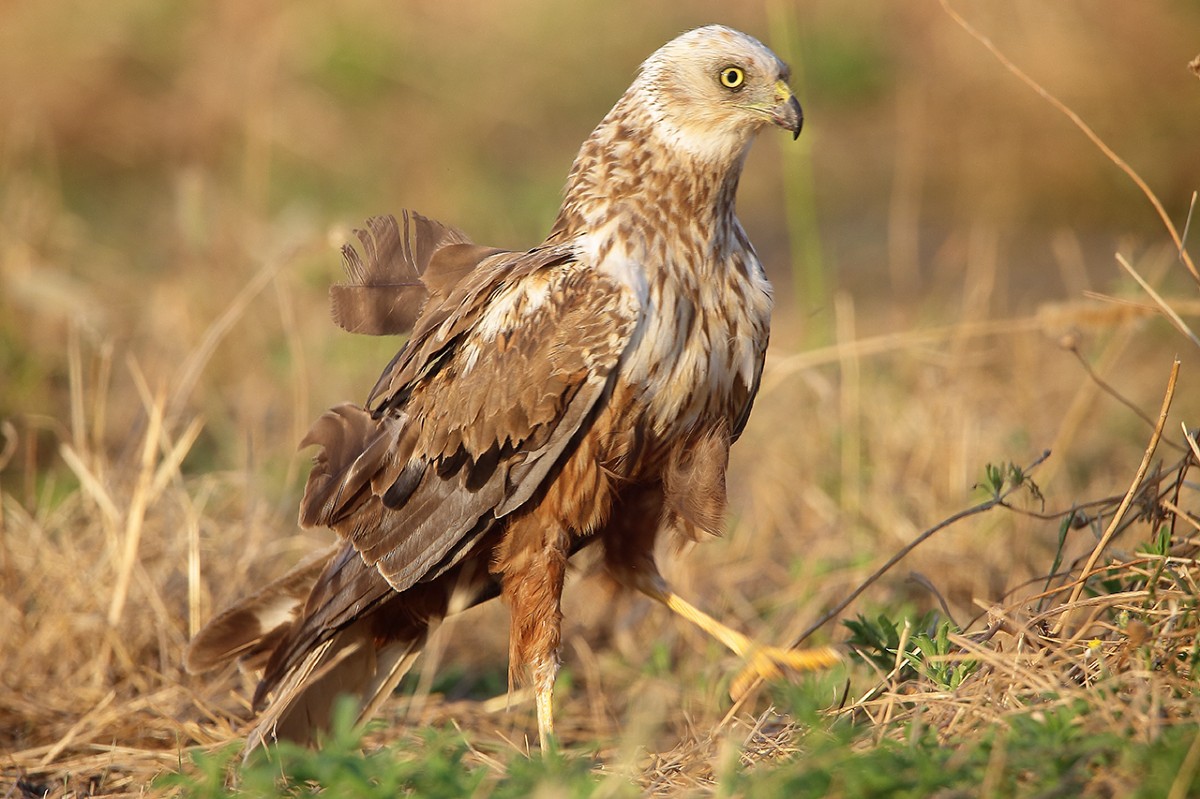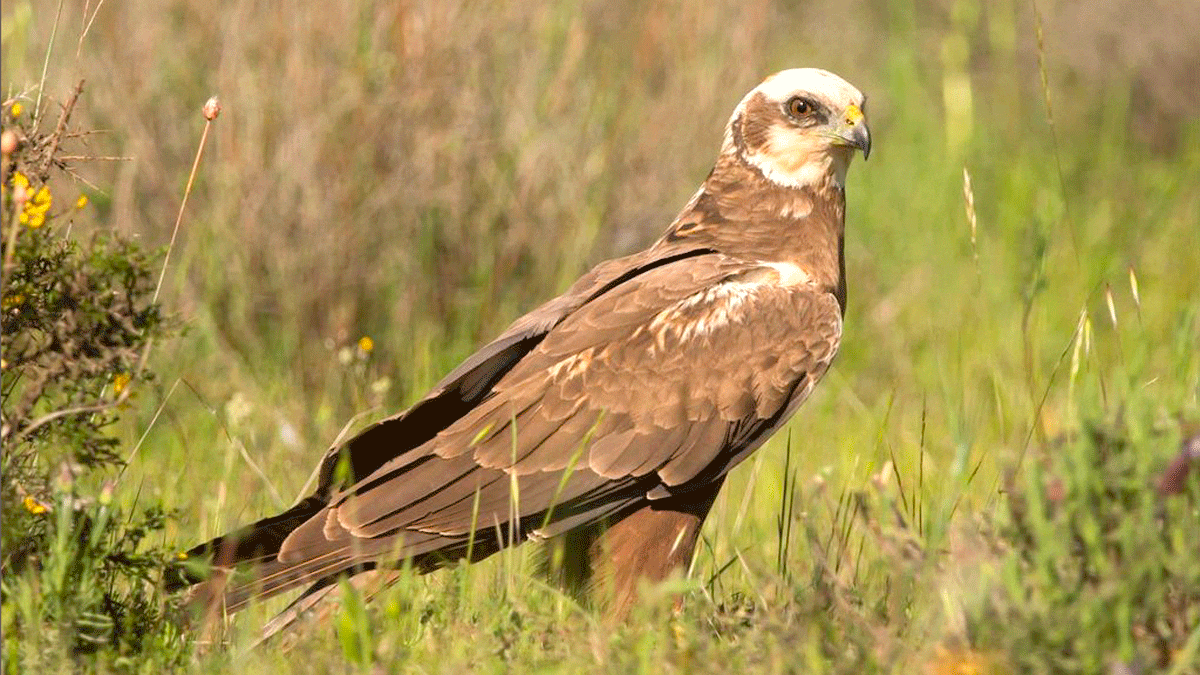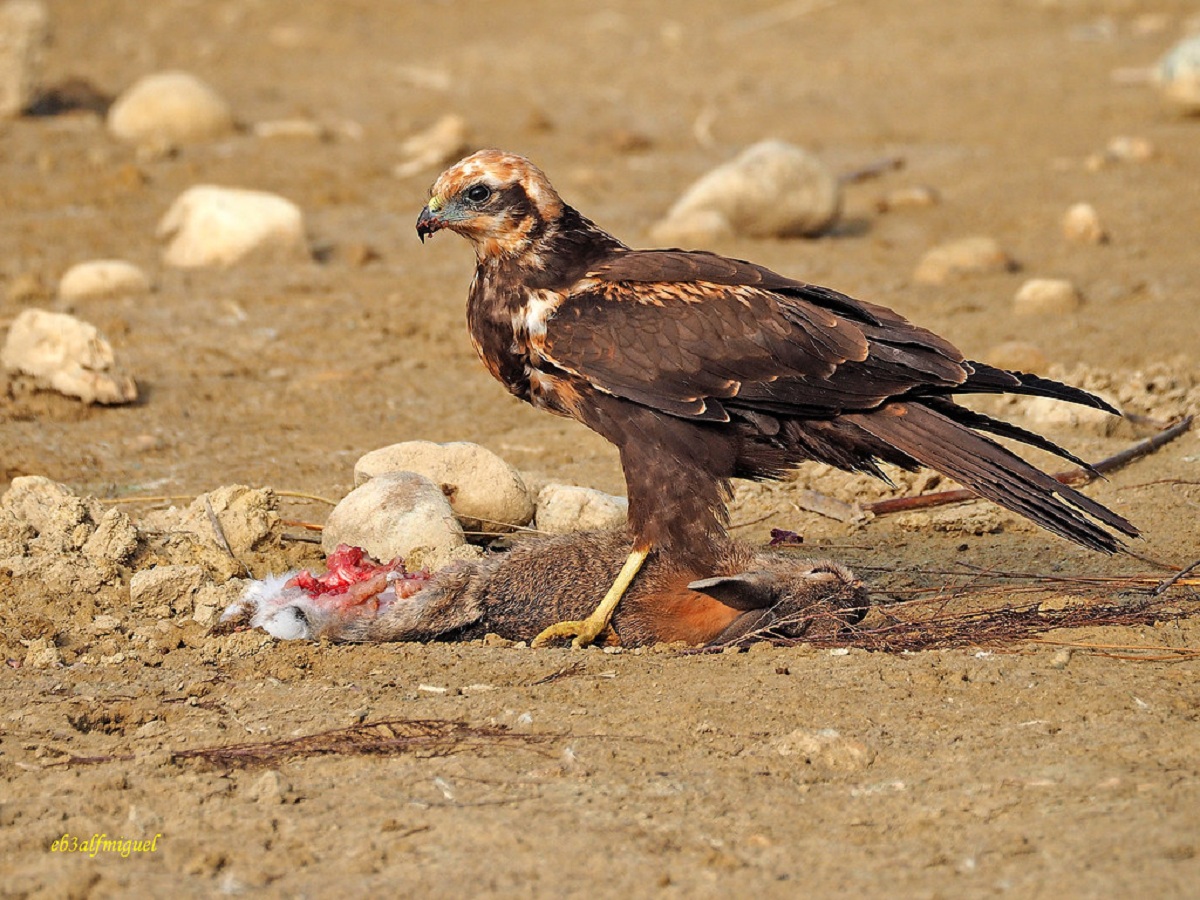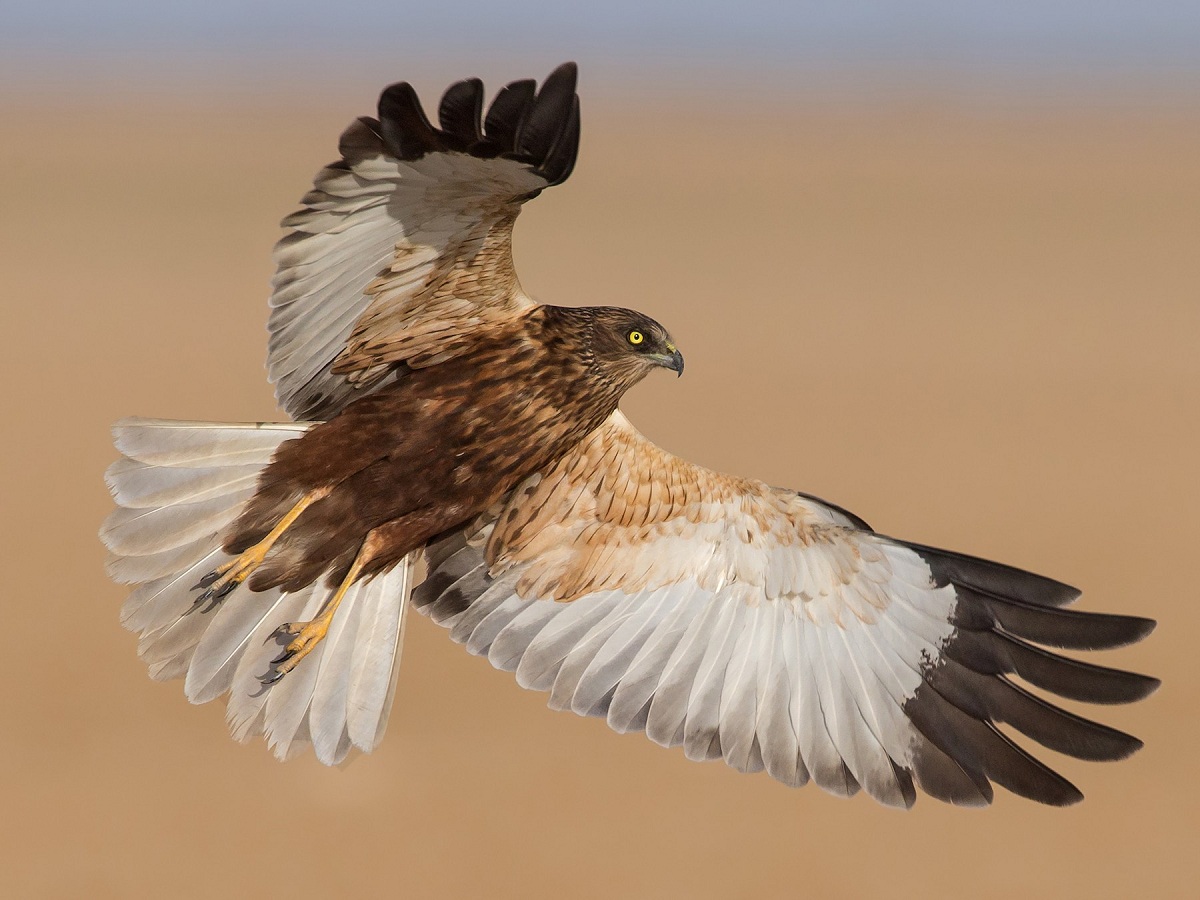
Today we are going to talk about a bird of prey that belongs to the Accipitridae family. Its about marsh harrier. Its scientific name is circus aeruginosus and is characterized mainly by having an elongated tail and very wide wings. He keeps them held in a V-shape while performing light flight over long distances. It is well known for the enormous distances it can travel during its migration season. Normally, most of this journey is done on the water, contrary to the rest of the specimens of its genus that do so on land.
In this article we are going to tell you all the characteristics, distribution and feeding of the marsh harrier.
Key features

In this species one can see a marked sexual dimorphism that makes it easier to differentiate the male from the female. And it is that the female has a dark rusty brown tone and is larger than the male that has a lighter brown color. As she plans her paths they form a dihedral to increase the distances they are able to travel. As for the males, their plumage is reddish brown with paler yellow stripes. They stand out mainly for their chest. The shoulders and head have a grayish-yellow hue. Both the iris and its extremities and legs are yellow. The beak is black and thick and has a hook shape. This hooked beak is used to more easily capture its prey.
While flying you can see the three characteristic colors of the male marsh harrier, which are brown, black and grey. As for the female, It has a chocolate brown color that creates a contrast on the throat and the upper part of the head. In all the extremities and the part of the upper dorsal region we see a generalized yellow color. The eye area turns a darker color and is what makes the eye recognizable with the naked eye.
Both males and females are very similar to their adult stage when they are young. However, they can be somewhat darker brown on the back and rusty yellow or reddish brown below. Since it presents sexual dimorphism we find all these varieties between the male and the female. If we analyze the size of both, we see that the females have a length of 45-50 centimeters with a wingspan of 111-122 centimeters. Males have a maximum length of 45 centimeters only and the wingspan between 97-109 centimeters. This makes the male and female have different characteristics.
The weight is also uneven. The female can weigh between the 390-600 3030 grams and the males between 290-390 grams only.
Area of distribution and behavior of the marsh harrier

The human being has generated numerous negative impacts on the populations of the marsh harrier that has caused a decrease in populations. Among the negative impacts that cause the most damage to populations is the destruction of their habitat. This is the reason why many countries are listed as a protected species.
They are little territorial animals that although during the winter the females are in charge of displacing the males from the feeding territory, they rest together on land when it is the reproductive stage. It is not a kind of territorial emptying with other species but more between them. Although it was traveling long distances, it has a fairly low flight speed. The same goes for altitude. It is a kind of bird that flies at low altitude. To take advantage of the wind direction and save energy, it can be easily glided and planar. Adult males have a somewhat faster and more agile flight than juveniles or females.
In addition to flying, the marsh harrier can jump and walk. They use it to be able to move and retrieve their prey. They can also collect various materials that they use to migration or looking for chicks that have strayed too far from the nest.
Regarding the area of distribution and habitat, we see that it extends from Europe and Africa, in the northwestern region, to Asia and the northern area of the Middle East. Habitat that is continually being destroyed is natural swamps and open plains. Most of all populations are migratory. Some spend the winter in the more temperate areas of the south and west of the European continent. They usually live in more open regions such as prairies, savannahs and fields. They can be found though to a lesser extent, in desert steppes and in agricultural and riverside areas.
In many of the areas where it lives we can see areas of low but very dense vegetation. Due to their morphology, their ability to fly and their eating habits, it is unlikely to find all these specimens in forested and mountainous territories. The habitat can vary depending on the geographical location where it is found. They can be found in areas such as wetlands, preferring all those areas that are rich in cane, although they can also be found in the steppes of desert areas.
Feeding of the marsh harrier

We are going to see the nutritional guidelines of this type of bird depending on the ecosystems. Its diet is based mainly on frogs, although it also it can capture small mammals, snakes, insects and lizards. Is a large predator and chicks, eggs and other birds. This is one of the reasons why this bird cannot live in mountainous areas. Mainly, all their power sources are in aquatic areas. This species takes the opportunity to capture its prey when they are sick or injured. In this way, they made the capture more easily.
It has a fairly advanced sense of sight, although it also uses its ears. Flight is slow and low but can glide over open ground with wings in a V shape and legs dangling. When he sees a prey glide transforms into a fast dive to be able to hunt it.
I hope that with this information you can learn more about the marsh harrier in its characteristics.